The Bathing Pavilion Idea
Bath houses and shower houses have been a part of the human experience for centuries, but what role can they play now?
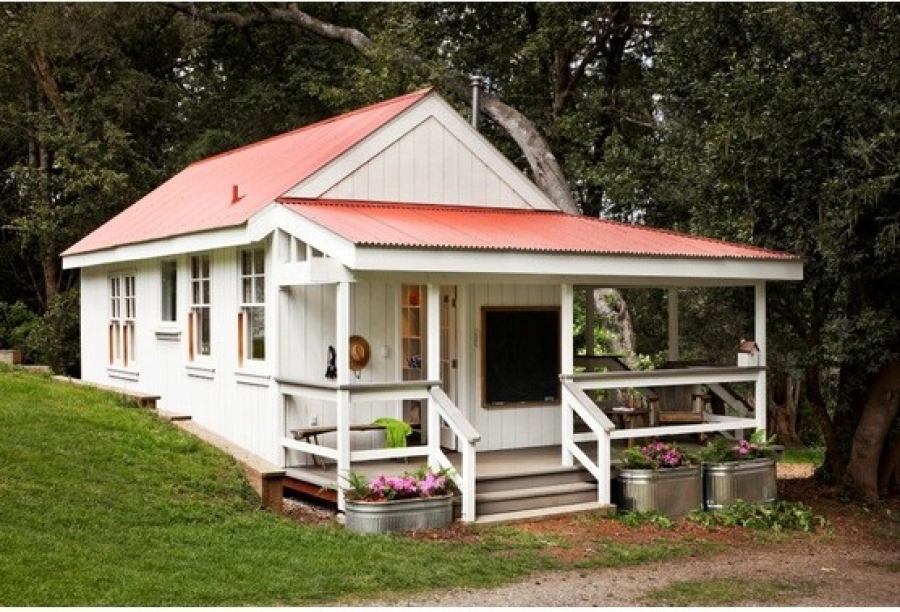
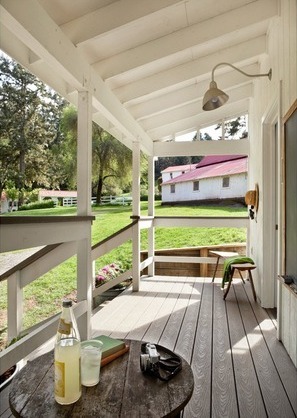
In honor of Earth Day, letís go back to basics. Take the bath, for example. We know it can be lavish, but whatís a simpler approach thatís resource-efficient and exhilarating at the same time? Iím glad you asked. Heidi Richardson, principal of Richardson Architects, designed this modest but memorable 150 sq. ft. bath house for a dairy farm. You can see the context below: iconic white barns with red corrugated metal roofs occupying a grassy swale. The bath house fits right in and looks as though it has always been there. The livable porch wraps around two sides, making the building feel much larger than it is. Inside itís rustic but resonant: the wide vertical boards, diagonal braced shower doors, and open ceiling ó all painted white ó catch and magnify the light, creating a bright, summery ambience. I feel cleaner just looking at the photo.

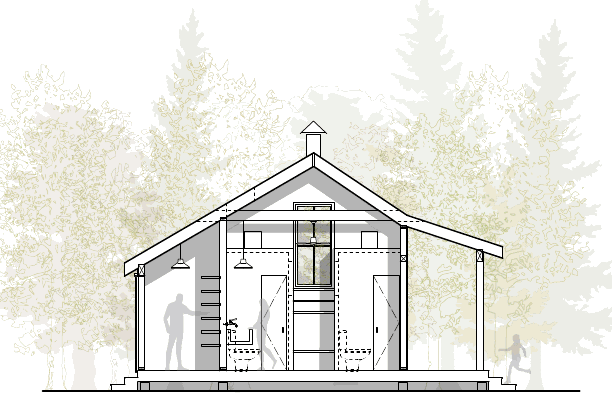
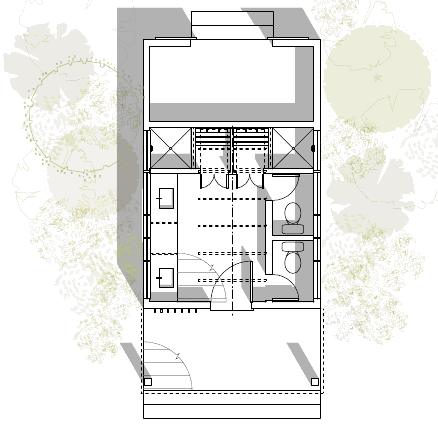
A version (illustrated above) of this wonderful little structure is available here. The section and the floor plan show two rooms, a bath house room with water closets, sinks, and showers in the front half and a storage room in the back. Itís easy to see how the building could be adapted to a variety of uses, such as a bunkhouse or a cookhouse or some combination; indeed, the sink and dishwasher (shown below) demonstrate how this space might double as a tiny kitchen.
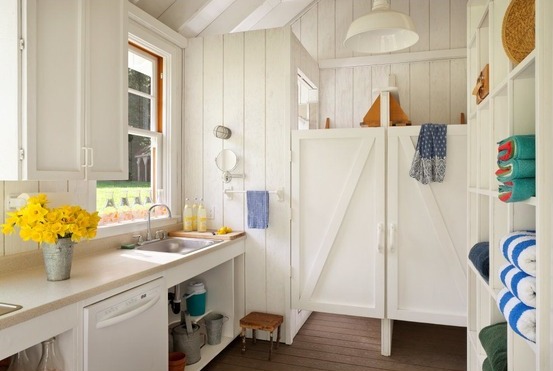
For a more classical approach to the bath house, you canít forget the ancient Romans, whose keen interest in bathing rituals ultimately led to the development of the vault and dome (so put away that rubber ducky and concentrate!). Some years ago architectural historian Fikret Yegul, author of Bathing in the Roman World, and an international team of archaeologists and engineers built a small private Roman bath near the site of the ancient city of Sardis in Turkey.
It was an experiment: only the Romans knew how their baths were built, and they didnít leave any copies of Bathhouses for Dummies lying around. Scholars had to study ruins and extrapolate. The rubble of concrete, stone, and tile indicated that the Roman bath house typically contained a cold room, warm room, and hot room (frigidarium, tepidarium, caldarium, respectively) heated by an underfloor heating system (hypocaust). The bath house building process undertaken by Yegul and his team was filmed by NOVA for the "Roman Bath" episode of its Secrets of Lost Empires series.
You see an occasionally fractious team of professors (ďIt wonít work.Ē ďYes, it will!Ē) build the structure under a strict TV production timetable using mostly Roman methods and materials. Then, after some glitches, they test it, looking a lot like a group of dusty but distinguished Romans after a hard day in the Senate. Apparently, it worked. But I would go with Heidiís version ó the water will get hotter quicker and you wonít need to hold a faculty meeting before turning on the tap.

Dan Gregory
Daniel P. Gregory is Editor-in-Chief of Houseplans.com, the largest online source of architectural house plans. The author of Cliff May and the Modern Ranch House (Rizzoli, 2008) as well as numerous articles on California architecture for magazines and books, Dan holds a Ph. D. in architectural history from U. C. Berkeley.
At Houseplans.com he has developed an expanding collection of exclusive plans by award-winning architects from across the country and around the world, from Not So big House author/architect Sarah Susanka to Melbourne modernist Leon Meyer. His weekly blog Eye On Design covers home news and trends.
Before joining Houseplans.com he was Senior Home Editor of Sunset Magazine, where he ran the AIA-Sunset Western Home Awards Program, helped develop the Sunset Breezehouse prefab by Michelle Kaufmann, and served as editorial director for the magazineís Idea House Program.
Website: www.houseplans.com










